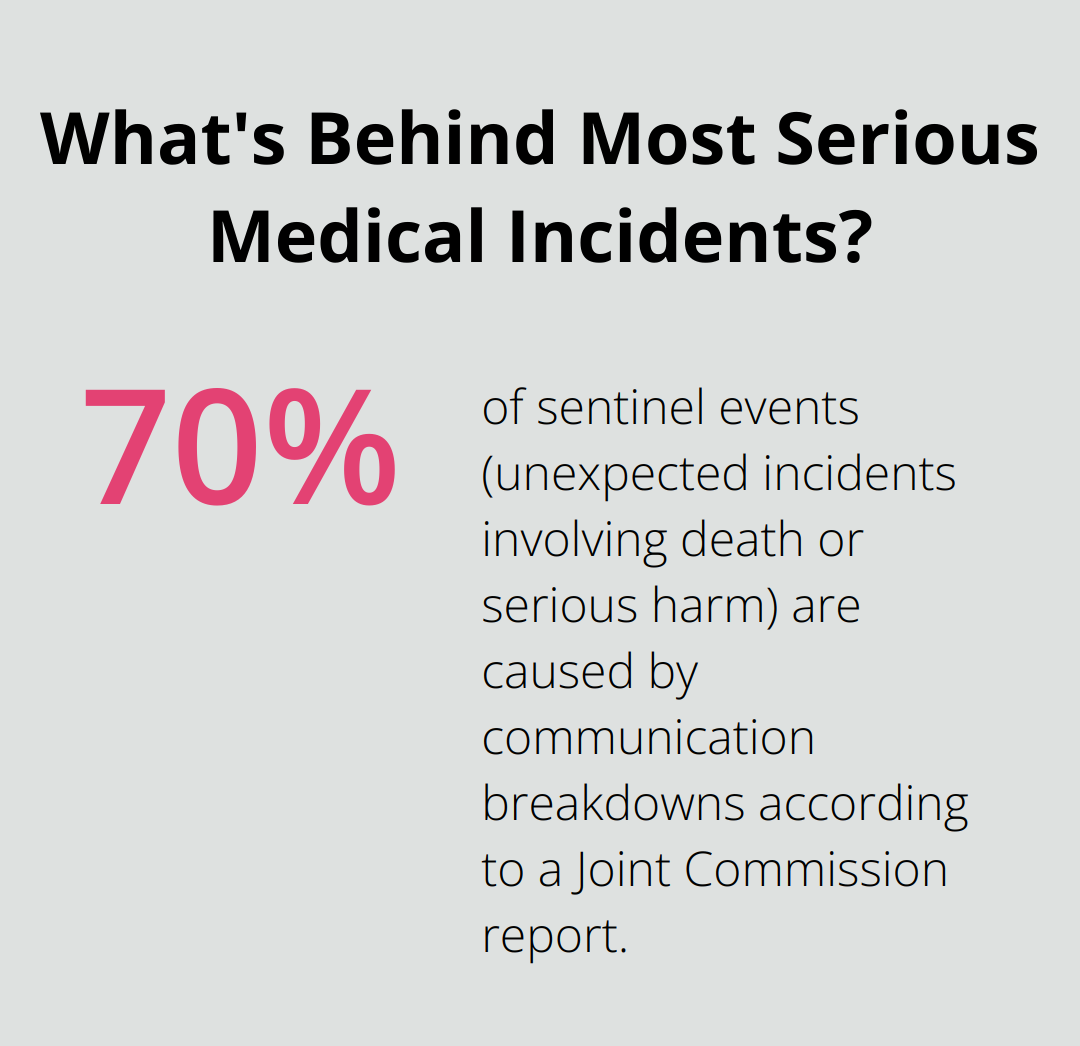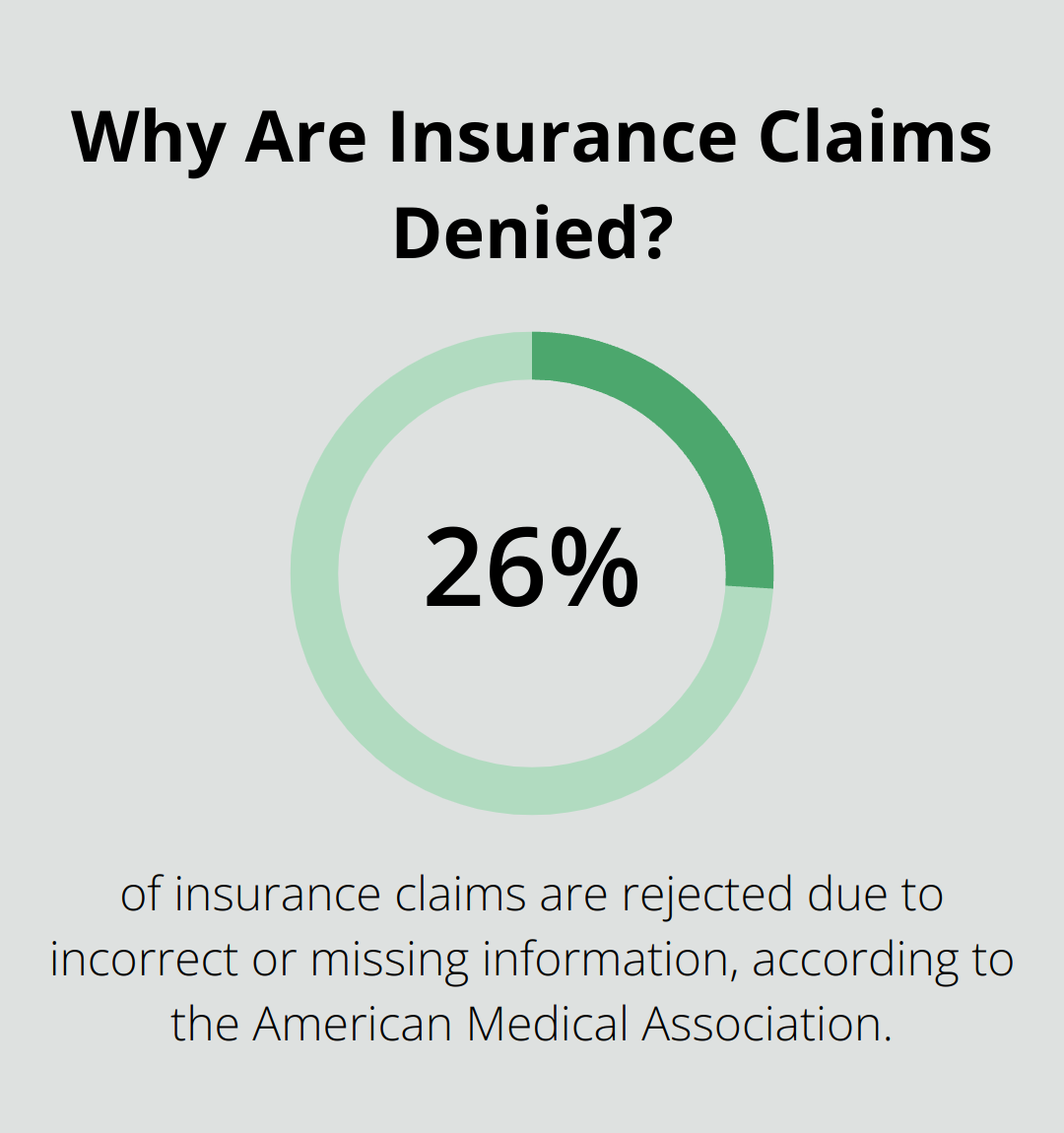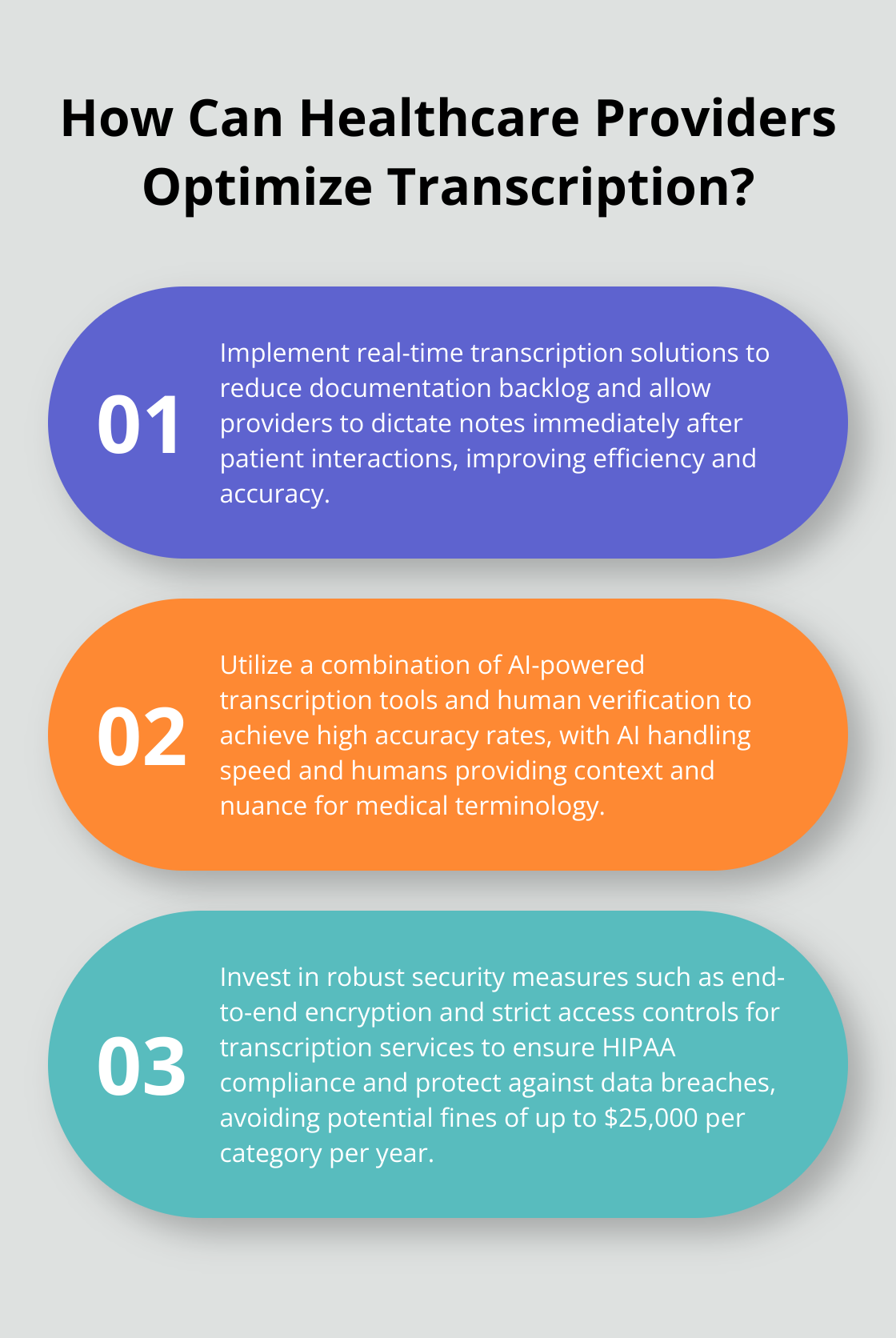Medical transcription—yeah, that unsexy corner of healthcare—is like oxygen in a hospital, invisible but crucial. At ScriberJoy, we get it. We’ve seen how nailing the transcription game can be the difference between chaos and a well-oiled medical machine.
This isn’t just about jotting down what the doc says. No, it’s the unsung hero connecting the dots—keeping the lines open among healthcare pros, making sure nobody ends up in court (compliance, baby), and hey, at the end of the day, helping patients get better.
What Exactly is Medical Transcription?
The Core of Medical Transcription
Let’s dive in-what’s medical transcription all about? Picture this: voice-recorded medical reports morph into written documents. It’s the unsung hero in healthcare… turning spoken words into neatly organized, easily accessible patient records.

At its core, medical transcription is about taking audio from healthcare pros and spinning it into crisp, accurate medical documents. But don’t kid yourself, it’s not just about fast fingers on a keyboard. You need a brain wired for medical terminology, anatomy, and healthcare lingo.
Transcriptionists are like language trapeze artists-decoding fast-talking medical jargon (sometimes with accents, mind you) into smooth, standard text. They also whip the info into specific formats, keeping patient records looking sharp and consistent.
The Evolution of Medical Transcription
This isn’t your grandfather’s transcription. Flashback to the 1960s-dictation machines shake things up big time, letting docs record their wisdom for later transcription.
Bam! Enter the digital age and everything changes again. 1990s bring us speech recognition software, dangling promises of a fully automated dream world. But… not so fast. These newbie systems were notorious for bungling complicated medical chatter.
Fast forward to today: it’s a beautiful dance between AI and human smarts. Super-smart speech recognition tech drafts up documents with dazzling accuracy. Then, our trusty human transcriptionists step in to polish these drafts, making sure they’re up to the gold standards of healthcare.
What does all this mean? You’ll get your docs way quicker. What once took days now wraps up in hours, maybe minutes. A study in the Journal of the American Medical Informatics Association flaunts the perks of AI-assisted transcription-it’s a game-changer for documentation speed.
Impact on Healthcare Providers
And for the folks in lab coats? This new world order means more face time with patients, less getting tangled in paperwork. A 2021 study screams out of the Annals of Internal Medicine, showing docs spend nearly two hours on electronic health scribbling for every hour they actually talk to patients. Efficient transcription services? They slash that paperwork monster down to size.
On top of that pile sits accurate transcription-a defender of patient safety. A Joint Commission report points out communication foul-ups in 70% of sentinel events (those unexpected shockers involving death or serious harm). Clear, precise medical records are a communication lifeline.
The Future of Medical Transcription
Tech keeps leaping forward… but where to next? AI-powered solutions like ScribeJoy? They’re the love child of speedy, efficient AI and the subtle wisdom of human experts-pumping out transcriptions with accuracy over 99% and cutting down turnaround times like nobody’s business.
Future’s bright for medical transcription-it’s all about the blend of tech and human touch. As we charge ahead, the mission for accurate, easy-access patient records shines on, supporting quality care every step of the way. Next up: we’ll dive into the real-world perks this precision brings to healthcare providers and their patients.
Why Accurate Medical Transcription Matters
Patient Safety: A Top Priority
So, medical transcription isn’t just paperwork-it’s a life-saver. According to The Journal of Patient Safety, 250,000 lives are lost each year in the U.S. due to medical screw-ups. Yeah, you heard right… a quarter million. Precise documentation? It’s the guardian angel catching those mistakes before they take a toll-ensuring all the info, diagnoses, and treatment plans are spot on.

Think about it-one tiny decimal out of place on a prescription could be deadly. Accurate transcription? It’s like having a full-back on your team, ready to stop that error from reaching the patient.
Enhancing Healthcare Team Collaboration
In today’s healthcare circus, there’s a whole team of specialists juggling each patient. Accurate transcription? It’s the tightrope, making sure everyone’s on the same page, with the same info. Bottom line: smooth communication ups the patient’s outcome game, big time.
Multicomponent interventions show that boosting communication and medication safety cuts down hospital readmissions. Accurate transcription is the maestro conducting this essential symphony of communication.
Optimizing Financial Processes
Here’s the deal-accurate medical transcription is as much about dollars as it is about care. Nail the documentation, and you’ll see more precise billing and faster cash from insurance.
The American Medical Association found that 26% of claims get the thumbs down due to wrong or missing info. Cut the denials… fix your financials… hello, healthier bottom line.
Maintaining Legal Compliance
In the rules-obsessed world of healthcare, compliance? It ain’t optional. Accurate transcription keeps you on the right side of the law-meeting all those pesky legal hoops (HIPAA, anyone?).
The Office for Civil Rights? They got over 3,700 HIPAA complaints in 2022. Many tied to mishandled patient data. Getting it right with HIPAA-compliant services helps dodge those ugly fines and legal headaches.
The Future of Medical Transcription
As healthcare morphs, transcription? It’s along for the ride. Advanced AI-powered solutions are now the rockstars-melding the swift precision of tech with the savvy of human experts. What you get? Transcriptions hitting over 99% accuracy, with way faster turnaround.
That’s the frontier-uniting tech genius with human know-how. As this arena evolves, the demand for spot-on, accessible patient records will keep fueling quality care. Coming up, let’s dive into the hurdles healthcare faces getting medical transcription systems rolling.
The Hurdles of Medical Transcription
Medical transcription, the unsung hero of healthcare, faces hurdles that mess with patient care, provider efficiency, and overall operations. Yep, it’s a bit of a circus.
The Time Crunch
Healthcare providers – ever feel like they’re in a perpetual race against time? A 2024 study lays it out: some docs are EHR slaves, logging in hours after hours. The result? Rushed, even messy documentation, which – shocker – could harm patient care.

Enter real-time transcription solutions. Providers can now dictate notes during or right after seeing patients… reducing backlog big time. But wait, there’s more. Adopting these new toys means training and adjustment, which initially hit the brakes on smooth operations.
Accuracy: The Double-Edged Sword
Accuracy in medical transcription? That’s the Holy Grail. But getting it right every time? Tough nut to crack. The Journal of the American Medical Informatics Association warns: tiny record goofs can snowball into giant problems – misdiagnosis, unsuitable treatments, you name it.
What gives? Medical jargon – it’s a beast. Layer in accents and speaking quirks, and bam, a cocktail for errors. And those AI-powered transcription tools? Despite their superhero stride, they stumble over context-specific lingo.
Humans? They’re better with nuance but – spoiler alert – can get sloppy when sleepy. The dream team? A mix of AI’s speed and human savvy for that cherry-on-top verification and context magic.
The Privacy Predicament
And… scene: the cyber threat era. Privacy and security of medical records, it’s a minefield. The U.S. Department of Health and Human Services clocked 3,700 HIPAA complaints in 2022 – data breaches galore.
Transcription services? They need to armor up: end-to-end encryption, fort Knox data storage, no-nonsense access controls. But ah, the twist! All this security jazz sometimes plays tug-of-war with the need for easy-peasy access by legit healthcare peeps.
Facilities need the perfect dance between security and access. That means pricey IT gear and rigorous staff schooling. Yet, slacking off carries hefty price tags from HIPAA violations – up to $25,000 per category, per year, courtesy of the attorney generals’ stern looks.
Technological Integration
The tech game – integrating transcription tools with old-school systems? A tangled web. Many facilities are stuck with legacy setups, snubbing their modern counterparts. Result – data silos, inefficiencies, errors. A tech drama in the making.
Overhauling systems for modern transcription magic? Pricey and laborious. Providers have to juggle the pros of smooth transcription with the chaos and costs of retooling the whole shebang.
Cost Considerations
Spot-on transcription means saving big bucks long haul by slashing errors and upping efficiency. Yet the upfront price tag? Oof. Facilities must consider the wallet drain from software, gadgets, training, and upkeep.
For small practices or standout providers, the financial pinch can hurt. This money hurdle often forces a quality gap in transcription between hefty healthcare giants and the small fish.
Final Thoughts
Medical transcription-it’s the unsung hero of modern healthcare. Seriously, it’s the glue holding patient care and documentation together. We’re talking about impacts on patient safety, amped-up provider communication, and yes, nailing legal compliance. But let’s take it beyond the basics of turning speech into text-this is about preserving the integrity of patient records, making smarter care decisions, and greasing the wheels of operations.

Looking ahead, the crystal ball shows AI stepping up the transcription game. We’re eyeing a future with mind-blowing accuracy and efficiency-thanks to these tech wonders-potentially freeing up more time for actual patient care. But don’t wave goodbye to the human touch just yet. The secret sauce? Blending AI’s rapid-fire speed with the nuanced touch of human understanding and context.
Healthcare providers-heads up! Prioritizing spot-on transcription is your ticket to better patient outcomes and slicker operations. Check out ScribeJoy-they’re tackling these challenges head-on with a combo of AI tech and human smarts. As healthcare keeps evolving, jumping on the transcription bandwagon will be a major play in delivering top-tier care.

Leave a Reply
You must be logged in to post a comment.